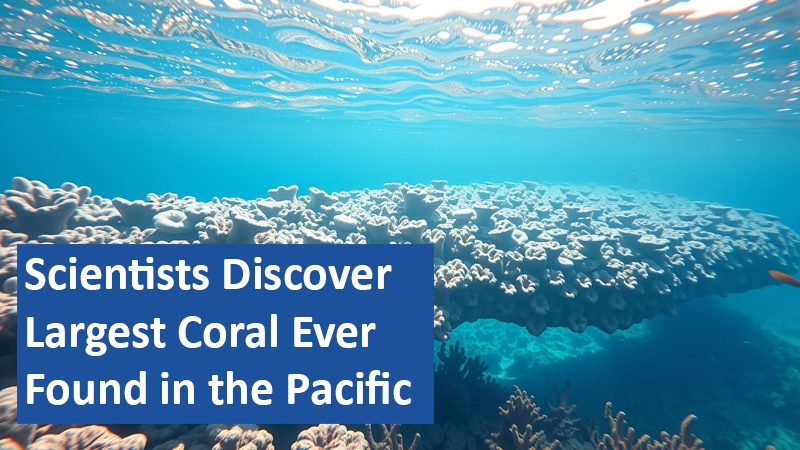Marine researchers have identified an enormous coral in the South Pacific that surpasses the length of a blue whale. This 34-meter-long coral, located near the Solomon Islands, is estimated to be around 300 years old. The discovery sheds light on the biodiversity of the region and raises awareness of the urgent need to protect marine ecosystems.
By John Adams
A Massive Discovery in the Pacific

Researchers from National Geographic’s Pristine Seas program recently uncovered a coral measuring 34 meters long and 32 meters wide in the waters surrounding the Solomon Islands. Unlike coral reefs, which are networks of colonies, this massive structure is a single organism formed by countless tiny coral polyps. The coral, identified as the species Pavona clavus, has been growing steadily for over three centuries. Its impressive size and longevity make it the largest single coral ever recorded.
Vibrant and Full of Life
The coral’s appearance is as striking as its size. Predominantly brown with yellow, blue, and red accents, it is teeming with life, serving as a vital habitat for shrimp, crabs, and various fish species. According to Enric Sala, founder of Pristine Seas, the discovery is a reminder of Earth’s hidden natural wonders. However, it also highlights a critical concern: even remote ecosystems like this coral are not immune to threats such as climate change and human activities.
A Symbol of Hope for the Solomon Islands
For the people of the Solomon Islands, the discovery represents a symbol of resilience and an urgent call to protect their marine environments. Premier Jeremiah Manele emphasized the vital role healthy coral reefs play in supporting local communities and biodiversity. Home to 490 coral species, the Solomon Islands boast the second-largest coral diversity in the world. This remarkable find underscores the importance of preserving these ecosystems for future generations.
Marine Conservation at a Crossroads
This discovery comes at a pivotal time in global ocean conservation efforts. Currently, only 8.4% of the world’s oceans are protected, far short of the goal to safeguard 30% by 2030. Achieving this target is essential to maintaining the ocean’s role in regulating carbon levels and ensuring food security for millions. Large, ancient corals like this one are a vivid reminder of what’s at stake.
The immense coral serves as a beacon for conservation efforts and highlights the fragility of marine ecosystems. Protecting such marvels is critical to preserving biodiversity and combating climate change.
Based on information from www.utopia.de and own research.